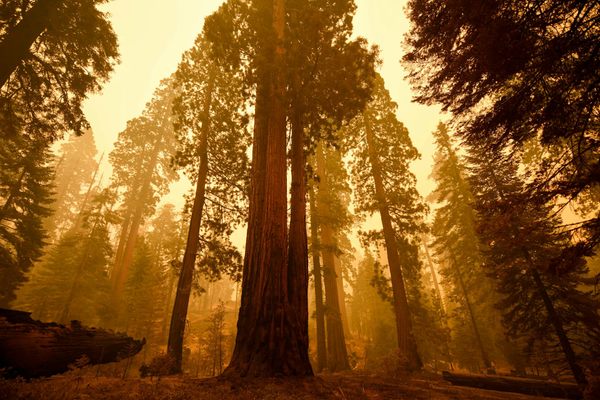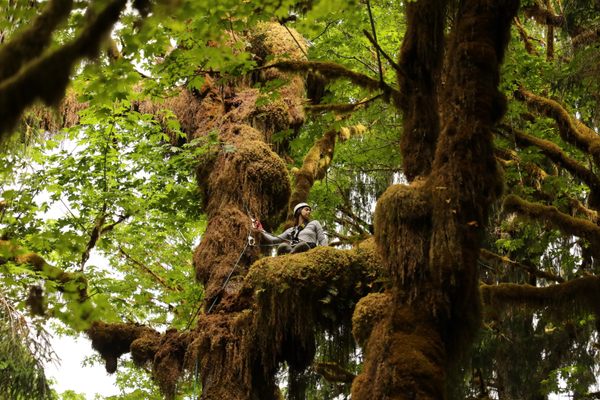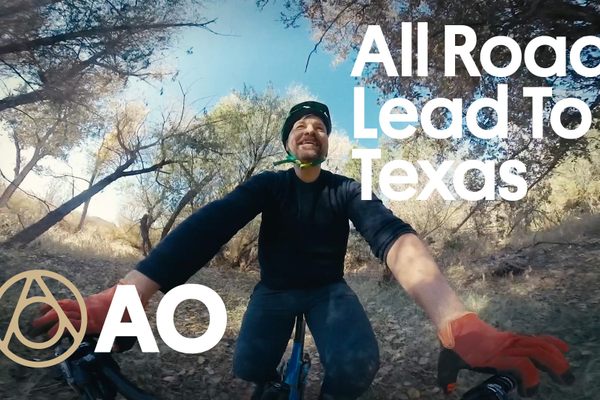Watch This Yule Log Burn in the Name of Science
Courtesy of the U.S. Forest Service’s Fire Sciences Laboratory.
In a metal-walled lab in Missoula, Montana, scientists play with fire. At the Fire Sciences Laboratory of the U.S. Forest Service’s Rocky Mountain Research Station, flames skitter through a wind tunnel, crawl uphill, and swirl into a blazing orange twist that seems to stand on end. Each pyrotechnic experiment is in service of a better understanding of how wildfires behave in the world beyond the lab—and how firefighters might be able to deal with them safely and effectively. Learning about fire behavior is a year-round project, but as winter dawns and we look for ways to get warm and homey, Atlas Obscura realized that the team’s experiments are often mesmerizing. The scientific work inspired the 2019 Atlas Obscura Yule Log, which you can enjoy in the knowledge that these flames flicker in the name of science.
These researchers set the blazes in order to understand specific aspects of how and why fires spread. “It’s not just because we’re fire geeks,” says Jason Forthofer, who works on modeling projects. And there’s still a lot to unpack. “I don’t think people fully understand that we don’t understand fully how wildfire spreads,” says Sara McAllister, whose work focuses on how fuel beds ignite and burn. “We have glimpses of things, but don’t understand the nuts and bolts of it.” The physics are complicated and subtle, adds Torben Grumstrup, who studies heat transfer.
Scientists know that burning fuel releases energy, which heats up unburned fuel to ignition temperature—“almost like dominoes,” Grumstrup says. But it’s the nuances, he adds, “that we can’t describe very well.” And nuance can be everything.
To puzzle out these finer points, scientists are investigating specific, big-stakes questions, such as why trees or grasses can spark when they’re full of water, how much the density of a forest affects fire behavior, or exactly how long various fuel beds can smolder.
Of course, the best time to model fire behavior and try to understand it is when you’re not staring down an inferno. “There’s no way you’re going to stand in front of a raging fire in the wild,” says McAllister. That’s where the lab comes in. There, the team can control temperature, windspeed, relative humidity, fuel distribution, and the exact shape, size, and composition of material in the fuel bed, says Forthofer. And it’s easy to flick off the lights to see and document the fire’s behavior more clearly.
The Yule Log video—set to a carefully chosen soundtrack—shows various kinds of experiments conducted at the lab. The first is known as the “chimney experiment,” in which the team burns strands of shredded wood under metal tube that is a foot square and about 12 feet tall. This simulates how a tall column of smoke pulls in an influx of fresh air at the bottom, which feeds the fire and blasts straight up. The second experiment is called the “cardboard experiment,” and entails placing little, laser-cut cardboard cones at regular intervals and then changing the slope to see how fires spread uphill. The third is known as the “fire puffing” experiment, which demonstrates how the frequency of “puffing,” or sudden bursts of flame, hot gas, or smoke, is related to the size of the area it burns in. The bigger the pan in this experiment, the less frequent the puff, and this holds true across fires large and small, says McAllister. “A candle flame will flicker” she says, “while a big, gigantic wildfire will puff every one or two minutes.”
The most mesmerizing of all is probably the “fire whirl.” To coax flames to swirl around and around like a vortex, the team sets fire to a bit of alcohol enclosed within a tube with slits in the side. “The air being drafted in is forced to come in in a swirling motion,” says Forthofer. As the air spins it accelerates upward and stretches the tube of air, which in turn cinches the diameter of the rotating column of fire. And, like a figure skater tucking her arms in, the tighter the column, the faster it spins. Out in the world, fire whirls can be massive, hundreds of yards wide, and deadly, Forthofer says. The final experiment in the video takes place in a wind tunnel, where the scientists explore how wind impacts fire and its spread.
Each flicker is part of the lab’s overall mission to develop tools and models that fire managers can use in the field to save lives and property. Over the years, the lab has worked on software including the Wildland Fire Decision Support System, which helps fire managers run models to predict fire behavior, and document decisions they make in response to it. If you cue up the Atlas Obscura Yule Log at your next get-together, you can kick back in front of a very educational fire—and explain to everyone just what they’re seeing.




































Follow us on Twitter to get the latest on the world's hidden wonders.
Like us on Facebook to get the latest on the world's hidden wonders.
Follow us on Twitter Like us on Facebook